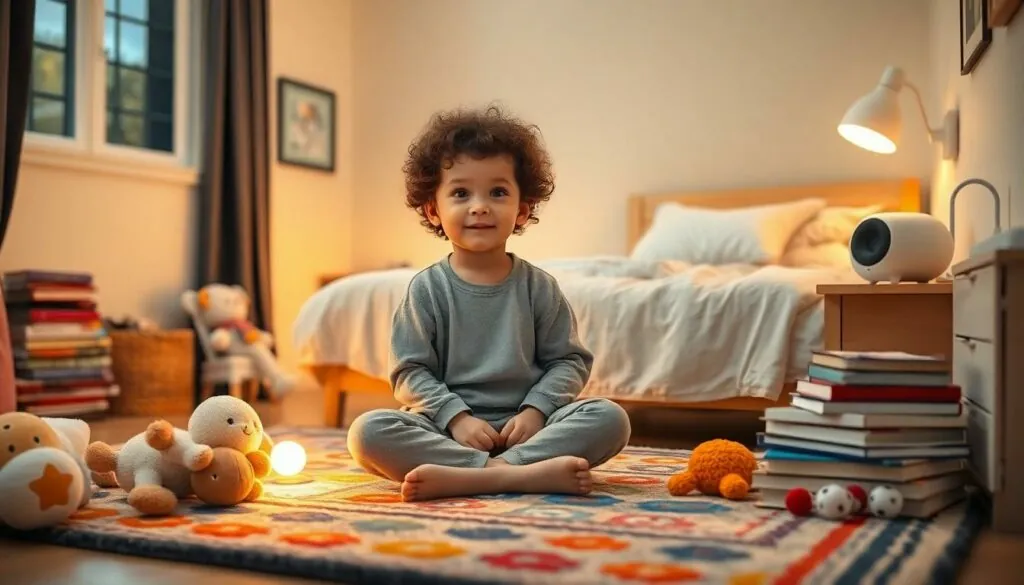Getting kids to sleep can feel like negotiating with tiny dictators who’ve had way too much sugar. Parents worldwide share the nightly struggle of convincing energetic children that bedtime isn’t a punishment but a necessary part of their day. It’s a universal challenge that leaves many caregivers wondering if they’ll ever get those precious moments of evening peace.
The good news? Establishing effective bedtime routines doesn’t require magic spells or supernatural powers. While there’s no one-size-fits-all solution to the bedtime battle, proven strategies can help transform those chaotic evenings into peaceful transitions to dreamland. From setting the right environment to understanding sleep cues, parents can build a toolkit of techniques that work for their unique situation.
Table of Contents
ToggleUnderstanding the Importance of Sleep for Children
Sleep plays a vital role in children’s physical growth mental development emotional regulation. Quality sleep enables children to process daily experiences build neural connections maintain overall well-being.
Sleep Requirements by Age Group
Different age groups require specific amounts of sleep for optimal development:
| Age Group | Daily Sleep Requirement (Hours) |
|---|---|
| Newborns (0-3 months) | 14-17 |
| Infants (4-11 months) | 12-15 |
| Toddlers (1-2 years) | 11-14 |
| Preschoolers (3-5 years) | 10-13 |
| School-age (6-12 years) | 9-12 |
| Teenagers (13-18 years) | 8-10 |
These sleep requirements include both nighttime sleep daytime naps. Consistent sleep schedules support children’s natural circadian rhythms enhance sleep quality.
Impact of Sleep on Child Development
Adequate sleep directly influences key developmental areas:
- Cognitive Function: Sleep enhances memory retention learning capacity problem-solving abilities
- Physical Growth: Growth hormones release primarily during deep sleep phases promoting tissue repair muscle development
- Emotional Balance: Well-rested children display better mood regulation decreased irritability improved social interactions
- Immune System: Quality sleep strengthens immune function reduces susceptibility to illnesses infections
- Academic Performance: Children who get sufficient sleep demonstrate better concentration classroom participation higher test scores
Regular sleep patterns create optimal conditions for these developmental processes maintaining consistent sleep schedules maximizes these benefits.
Creating the Perfect Sleep Environment
A child’s sleep environment plays a crucial role in promoting quality rest. Environmental factors influence both the ease of falling asleep and sleep duration throughout the night.
Room Temperature and Lighting
The optimal sleeping temperature for children ranges between 68-72°F (20-22°C). Installing blackout curtains blocks disruptive external light sources during both nighttime sleep and daytime naps. A small nightlight with warm amber tones helps reduce fear of darkness while maintaining melatonin production. Smart bulbs programmed to dim gradually signal the approaching bedtime through the body’s natural circadian rhythm responses.
| Temperature Guidelines | Recommended Range |
|---|---|
| Optimal Room Temp | 68-72°F (20-22°C) |
| Humidity Level | 30-50% |
Choosing Comfortable Bedding
Cotton bedding materials regulate body temperature effectively throughout sleep cycles. Layering options include a fitted sheet a light blanket a comforter to accommodate temperature changes. The mattress requires firm support with minimal sagging to promote proper spinal alignment. Pillows matched to the child’s size support neutral neck positioning during sleep. Waterproof mattress protectors guard against accidents while maintaining breathability.
| Bedding Element | Recommended Material |
|---|---|
| Sheets | 100% Cotton |
| Mattress | Medium-firm support |
| Pillows | Age-appropriate size |
Establishing a Consistent Bedtime Routine
A structured bedtime routine signals the body to prepare for sleep through predictable activities. Creating fixed patterns helps children transition from daytime energy to nighttime rest.
Bath Time and Pajama Ritual
A warm bath 30 minutes before bedtime lowers body temperature to induce sleepiness. The optimal bath temperature ranges between 90-100°F (32-37°C) for a 10-15 minute soak. Children respond positively to familiar bath toys like rubber ducks boats rubber books squeaky animals during this wind-down period. After bath time putting on clean comfortable pajamas made of breathable fabrics like cotton creates a physical transition toward sleep. Parents enhance this ritual by incorporating gentle massage or lotion application which releases relaxing endorphins preparing the body for rest.
Storytime and Quiet Activities
Reading becomes a powerful sleep cue when incorporated consistently into bedtime routines. Parents select age-appropriate books lasting 10-15 minutes avoiding overly stimulating stories or complex plots. Quiet activities like coloring drawing or simple puzzles work effectively 20-30 minutes before lights out. Soft background music at 60-80 beats per minute creates additional calming effects. Children benefit from routine completion markers such as selecting tomorrow’s clothes arranging favorite stuffed animals or saying goodnight to family members in a specific order. These predictable elements create security comfort leading to easier sleep transitions.
Managing Common Sleep Challenges
Sleep disruptions in children stem from various developmental stages, environmental factors or behavioral patterns. Understanding these challenges enables parents to implement effective solutions for better sleep.
Dealing With Night Wakings
Night wakings occur in 20-30% of young children. Infants under 6 months naturally wake every 2-3 hours for feeding, while older children wake due to sleep cycle transitions, anxiety or physical discomfort. Parents can minimize these disruptions by:
- Responding quickly but briefly to nighttime calls
- Keeping interactions minimal with dim lighting
- Using white noise machines to mask environmental sounds
- Checking room temperature stays between 68-72°F
- Teaching self-soothing techniques like deep breathing
- Establishing a consistent response pattern for wakings
Handling Bedtime Resistance
Children resist bedtime through multiple delay tactics: requesting water, extra stories or bathroom visits. Research shows 25% of children exhibit bedtime resistance behaviors. Effective management includes:
- Setting clear boundaries around bedtime requests
- Creating a bedtime pass system for limited requests
- Implementing a reward chart for following routines
- Returning wandering children to bed without engagement
- Starting bedtime 15-20 minutes earlier to accommodate delays
- Using visual timers to signal bedtime approach
- Maintaining consistent consequences for resistance behaviors
When resistance occurs, parents stay calm and firm while redirecting children back to bed. This consistency reduces resistance behaviors within 1-2 weeks.
Helpful Sleep-Inducing Techniques
Sleep-inducing techniques create a calming transition from wakefulness to rest. These evidence-based methods promote relaxation and prepare children’s bodies for sleep.
Gentle Massage and Back Rubbing
Massage techniques stimulate the production of sleep-promoting hormones in children. Light strokes along the back trigger the release of melatonin while reducing cortisol levels by 32%. Parents start with gentle circular motions on the shoulders for 3-5 minutes, then move down the spine using light pressure. Specific patterns like “drawing” shapes or letters on the back engage younger children aged 2-6 years while keeping movements relaxing. Clinical studies show that children who receive a 15-minute bedtime massage fall asleep 15 minutes faster than those who don’t.
White Noise and Lullabies
White noise machines create consistent background sounds at 60-70 decibels, matching the volume of a soft shower. Research indicates that 80% of infants fall asleep faster with white noise compared to silence. Popular sound options include rainfall, ocean waves or gentle fan noises. Traditional lullabies played at 60-80 beats per minute align with resting heart rates. Parents introduce these sounds 20 minutes before bedtime, maintaining the same playlist or white noise setting each night. Studies demonstrate that consistent bedtime sounds reduce night wakings by 43% in children under 5 years old.
Foods That Help Promote Better Sleep
Certain foods contain natural compounds that enhance sleep quality through the production of sleep-regulating hormones like melatonin serotonin. Timing these foods 1-2 hours before bedtime optimizes their sleep-inducing effects.
Best Evening Snacks
Complex carbohydrates paired with lean proteins create an optimal bedtime snack combination. Bananas contain natural muscle relaxants magnesium potassium that ease tension. Whole grain crackers with almond butter provide tryptophan which converts to sleep-promoting serotonin. Other sleep-enhancing snacks include:
- Greek yogurt with honey (contains protein calcium)
- Oatmeal with warm milk (rich in melatonin beta-glucan)
- Cherry smoothies (natural source of melatonin)
- String cheese with graham crackers (calcium protein mix)
- Hummus with whole grain pita (protein complex carbs)
What to Avoid Before Bedtime
Foods that disrupt sleep patterns interfere with quality rest through various mechanisms. Large meals increase metabolic activity keeping children awake. Problem foods include:
- Chocolate contains caffeine theobromine stimulants
- Sugary treats spike blood glucose levels
- Acidic foods cause potential reflux discomfort
- Processed snacks with artificial colors flavors
- Carbonated beverages create stomach discomfort
- High-fat foods slow digestion interrupt sleep
- Citrus fruits increase acid production
Establishing a 2-3 hour gap between the last meal bedtime reduces sleep disruptions. Limiting liquid intake 60 minutes before bed prevents nighttime bathroom trips.
Conclusion
Getting kids to sleep doesn’t have to be a nightly battle. With consistent routines well-planned sleep environments and proper nutrition parents can create a peaceful bedtime experience. While every child is different the strategies outlined here provide a solid foundation for establishing healthy sleep habits.
Remember that change takes time and patience. By implementing these evidence-based techniques and remaining consistent parents can help their children develop lifelong healthy sleep patterns. Sweet dreams await for both parents and children when these proven methods become part of the nightly routine.


